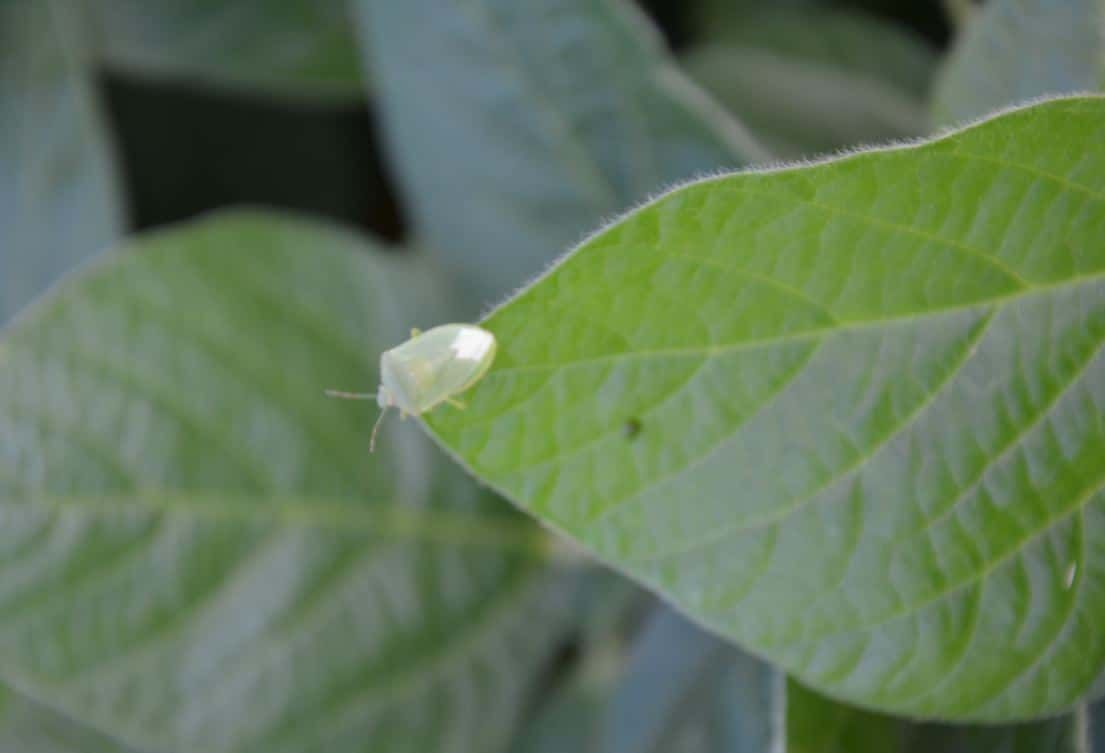MONITOR DISEASES AND PESTS
OBJECTIVE: Preserve yield performance and reduce insect pressure

SCLEROTINIA (Sclerotinia sclerotiorum)
- If sclerotinia has already been observed on other crops on the field, soybean will also be at risk. Irrigation or rainy weather will increase sclerotinia development.
- Use a variety with low susceptibility to sclerotinia.
- Adapt irrigation by spacing out sessions while increasing water amount per session to avoid a ”hammam” effect that contributes to the development of sclerotinia.
DIAPORTHE (Diaporthe phaseolorum + var caulivora)
- Characterised by a sudden dryness at the end of the cycle with small black points on the stem and pods (pycnidia) or superficial red-brown spot at a node (var caulivora).
- Develops with high moisture and temperature before harvest.
- This disease is spread by farm saved seeds, so the solutions are to use certified seeds and bury crop residues.
SEED FLIES/MAGGOT (Delia platura)
- Can cause significant damage if emergence conditions are cold and humid with early and deep planting, especially in soils with high organic matter.
- The only solution is to plant in more favourable conditions to obtain quick emergence.
GREEN STINK BUG (Nezara viridula L.)
- Observe the crop from mid-July to mid-August once a week on 6 to 8 points over a few square metres, at the edges of and inside the field.
- If bugs are found (2 to 3 minimum) on each second observation point, treatment is advised.
- Some insecticides can be used but no later than 15 days before harvest. Check with local authorities for the molecules and dosages allowed.
HELICOVERPA ARMIGERA/HELIOTHIS
- Attacks depend on arrival date and number of generations.
- Observation and pheromone traps make it possible to ensure application of insecticide at the best time. Biological treatments (Bacillus thuringiensis, baculovirus) are efficient on eggs and young larvae. Irrigation and crop rotation are also good solutions.
For more information, download our soybean technical guide: click here.
